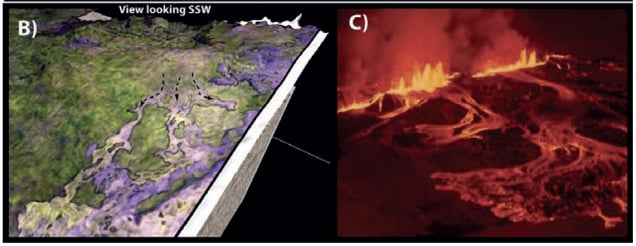A common objective for GeoTeric users, as they advance their knowledge of the application, is to try to define a Geological Expression from their seismic data; usually this involves putting the seismic attributes into some sort of geological context. A recent study identifying intra-basaltic drainage systems within the Faroe-Shetland basin highlights the power of attribute analysis in resolving a complex geological environment from seismic data. The study, “Development of intra-basaltic lava-field drainage systems within the Faroe-Shetland basin” by Nick Schofield and David Jolly (Petroleum Geoscience, 19, 273-288) uses several common techniques to aid the interpretation channels that were formed at the time of Palaeocene volcanism (or shortly thereafter). These sedimentary features are of great interest in this basin as they have proven reservoir potential (Chevron’s Rosebank well, 213/27-1 encountered such intra-basaltic reservoir). Methods used to aid the interpretation are amplitude extraction, frequency decomposition and RGB blending, and isochron mapping. The frequency decomposition colour blend, created using GeoTeric is very successful at delineating the thin, high-frequency channels and this interpretation is also corroborated through isochron thickness as shown in this image from their paper:



